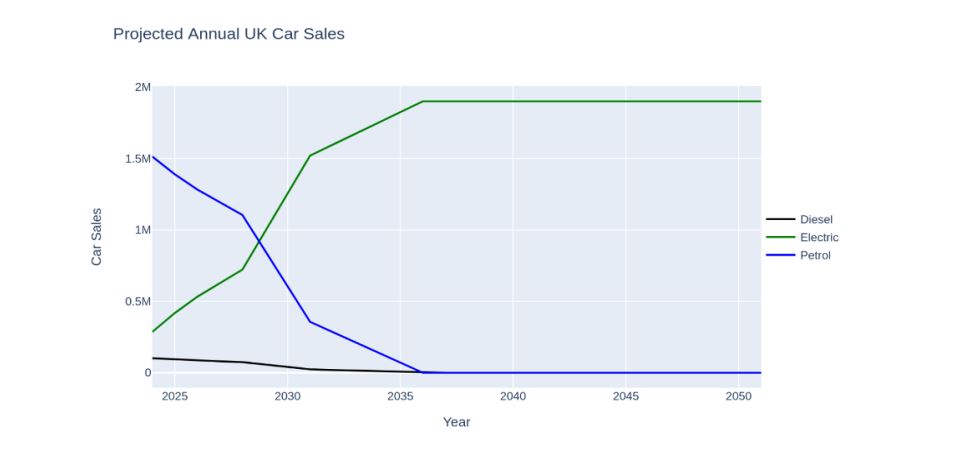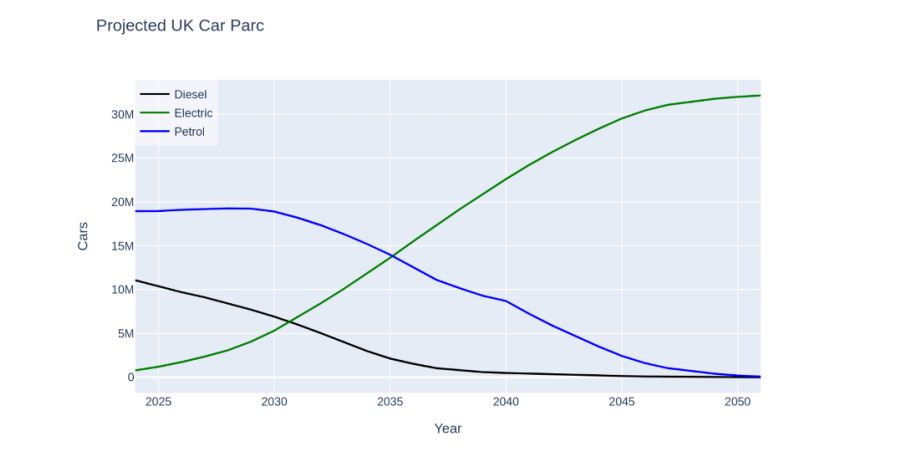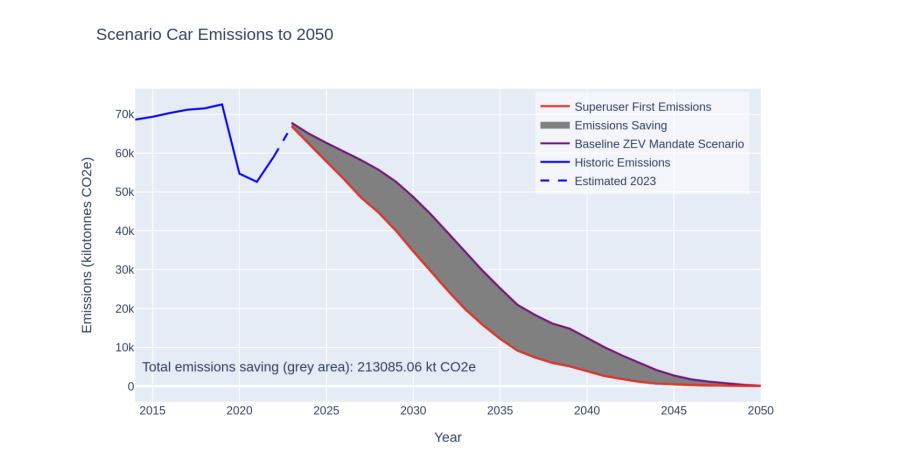“Driving Collaboration in Europe's Thriving EV Sector: opportunities for emissions reductions”

In the rapidly evolving landscape of the European electric vehicle (EV) sector, partnering is the key to innovation and sustainability. As the demand for clean and efficient transportation solutions continues to surge, forming strategic partnerships is essential for staying at the forefront of this dynamic industry. In this blog, we'll explore the immense potential for partnerships within Europe's thriving EV sector. The pressing threat of climate change necessitates urgent and substantial carbon emissions reductions from all of us. Among the leading contributors to emissions is the transportation sector. Globally, road transport alone is responsible for approximately 12% of emissions. Interestingly, this sector offers a readily available zero-emission alternative, so what impedes our progress toward emission reduction? In recent years, electric vehicle (EV) sales have gained significant traction in developed markets, triggering a global race among car manufacturers and governments to produce batteries and integrate them into vehicles as rapidly as possible. This competitive push is driven by the realisation that falling behind in this race means forfeiting a share of the future automotive market, which is increasingly turning to battery-electric vehicles.
Source: New AutoMotive analysis
Using the United Kingdom as an example, the UK government's plans for a Zero-Emission Vehicle (ZEV) mandate provide us with insights into the future direction of the automobile market and, consequently, the composition of vehicles on the road - the car parc. However, it's important to note that while sales change rapidly, transitioning the entire existing vehicle fleet to electric power is a task that will span decades.
Source: New AutoMotive analysis
To help mitigate this, recognizing that there is no such thing as an "average motorist" in the UK, or anywhere else in Europe for that matter, may be key. In the UK, a small percentage of vehicles accounts for a significant share of the total miles driven. Specifically, 10% of cars are responsible for 25% of the total car mileage in the UK. In fact, there is a substantial group of high-mileage drivers, often referred to as 'superusers,' a term coined by the American organisation Coltura, which has extensively studied this issue. Electric cars are frequently compared to cutting-edge technologies like mobile phones or laptops. However, these products were not introduced during or in response to a crisis. A more relevant comparison lies in the field of medical technology. When the first vaccines against COVID-19 were proven safe and effective, governments faced the challenge of scaling up production and optimising distribution to benefit society maximally, prioritising the vaccination of vulnerable populations first. There are several parallels with electric cars. The technology behind battery electric vehicles is unequivocally proven—they are an affordable, practical, and sensible option for most use cases. The current challenge revolves around the speed and effectiveness of their deployment to motorists. Let's imagine that, akin to vaccine distribution, public policy aimed to deploy electric vehicles in a manner that maximised societal benefits, adopting a 'superuser-first' approach. Such a transition would yield a significantly different emissions reduction curve, potentially advancing emissions savings by as much as 3-4 years. The total emissions savings achieved could be equivalent to the annual emissions of an entire European country, like Egypt.
Source: New AutoMotive analysis
As with any public policy, the real challenge lies in implementation rather than design. There needs to be effective methodologies for reaching superusers, and further research is crucial for better understanding these users' characteristics. Furthermore, to get this approach embedded in public policy will require industry and NGOs to work together in partnership. We actively seek partnerships with companies who share our goals so if you would like to work with us on initiatives that will target superusers across Europe, please get in touch with us at https://newautomotive.org/contact
New AutoMotive is an independent data-driven think tank based in the UK on a mission to support the acceleration of transport decarbonisation. We recognise that drivers are key to the transition to EVs and put them at the heart of everything we do. Our data-led research helps them understand innovations in EVs and assists governments, manufacturers and entrepreneurs in making the best decisions on their behalf. We use analysis from social research to influence policy and to ensure change is enacted to benefit motorists. Unlike most research organisations, we build consumer products to test our thinking and to drive change in the real world.
In the same category
- “Driving Collaboration in Europe's Thriving EV Sector: opportunities for emissions reductions”
- Autel Energy bringing innovative new EV chargers across Europe
- Baden-Württemberg on its way to becoming the top location for e-mobility
- ECO/G
- Empowering the Transition to Electric Mobility: Equans' Smart Charging Solutions
- Hyundai
- Leapmotor
- Sungrow EV Charging Introduced Low and Fast EV Charging solutions
- Total Energies
- Why Submit to World Electric Vehicle Journal?
- World Electric Vehicle Journal : Analysis of Energy Flow in a Mid-Sized Electric Passenger Vehicle in Urban Driving Conditions
- World Electric Vehicle Journal : Battery Health Monitoring and Degradation Prognosis in Fleet Management Systems
- World Electric Vehicle Journal : Evaluation of a Back-up Range Extender and Other Heavy-Duty BEV-Supporting Systems
- World Electric Vehicle Journal : Implementation Schemes for Electric Bus Fleets at Depots with Optimized Energy Procurements in Virtual Power Plant Operations
- World Electric Vehicle Journal : Investigation and Development of Textile Lightweight Bodies for Urban Logistic Vehicles
- World Electric Vehicle Journal : Leveraging Connected Vehicle Data to Assess Interstate Exit Utilization and Identify Charging Infrastructure Investment Allocation Opportunities
- World Electric Vehicle Journal : Performance Comparison of Si IGBT and SiC MOSFET Power Module Driving IPMSM or IM under WLTC
- World Electric Vehicle Journal : Perspectives on Modeling Energy and Mobility Transitions for Stakeholders: A Dutch Case
- World Electric Vehicle Journal : Proposing a Hybrid Thermal Management System Based on Phase Change Material/Metal Foam for Lithium-Ion Batteries
- World Electric Vehicle Journal : Second-Life Batteries Modeling for Performance Tracking in a Mobile Charging Station
- World Electric Vehicle Journal : The “Semiconductor Crisis” as a Result of the COVID-19 Pandemic and Impacts on the Automotive Industry and Its Supply Chains
- World Electric Vehicle Journal : Thermal Analysis of Coupled Resonant Coils for an Electric Vehicle Wireless Charging System


